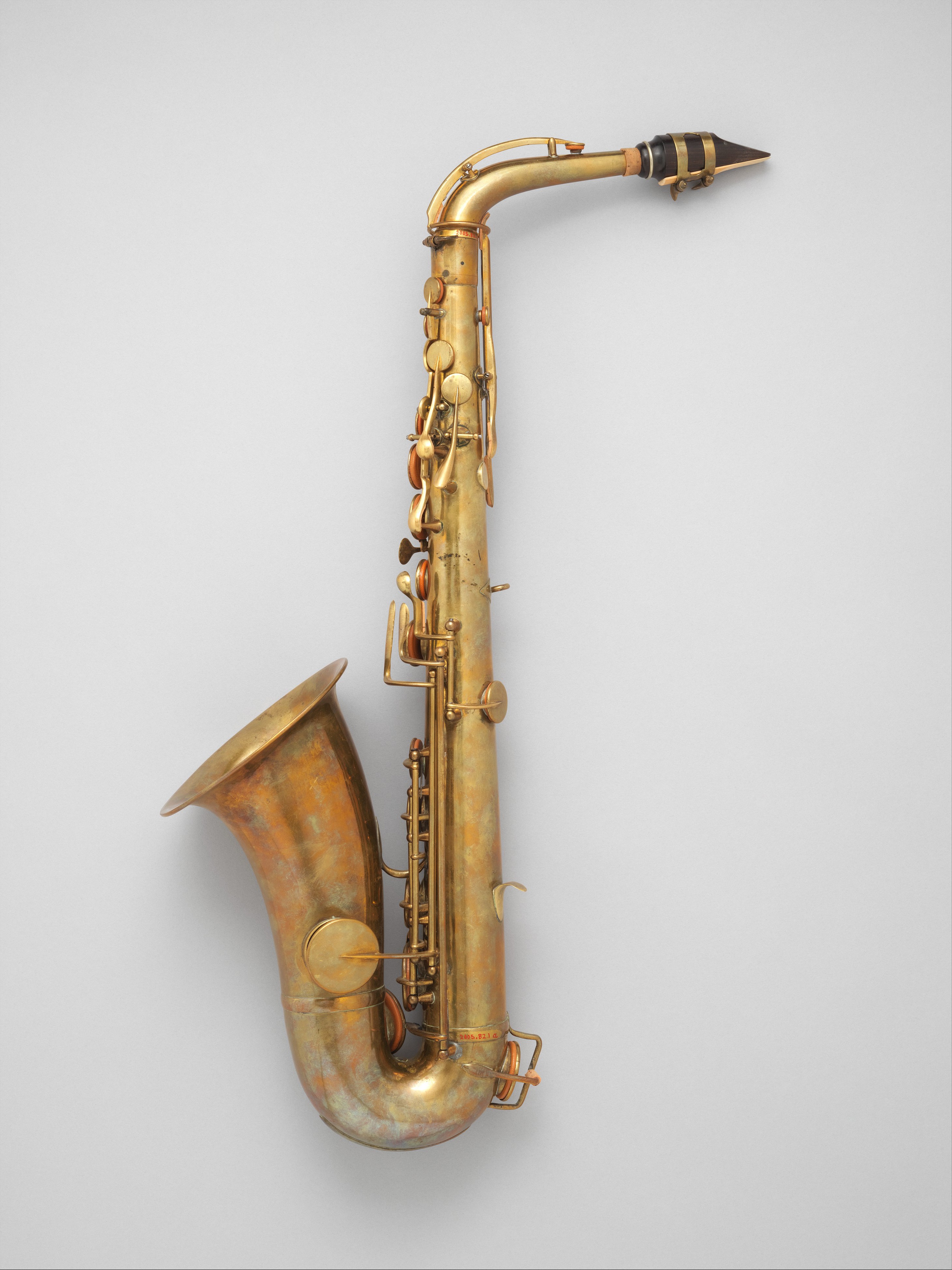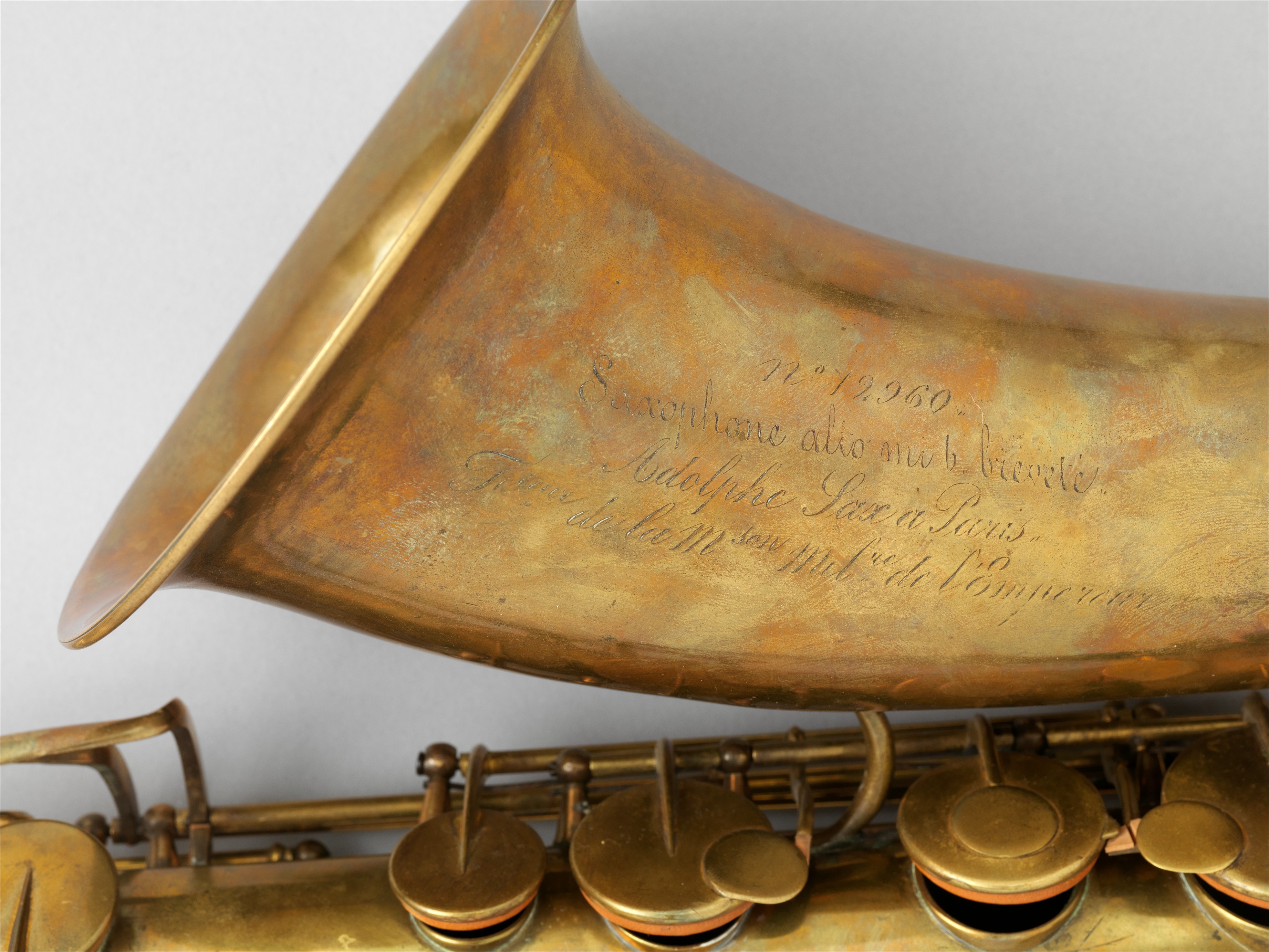Alto saxophone in E-flat
Adolphe (Antoine Joseph) Sax Belgian, active France
When the saxophone was patented in 1846, the wind family lacked a robust lower voice. Sax developed the saxophone to fill this gap. Although he struggled to promote the instrument to conservative orchestral composers, it enjoyed success as a band instrument during Sax’s lifetime. The saxophone achieved universal popularity through jazz and pop, two genres that, ironically, did not exist until long after its invention. These associations, emblematic of America, have made the saxophone a potent cultural and political symbol.
The saxophone has become one of the most widespread instruments in the world. Its vocal qualities, such as its highly expressive and flexible tone and the ease with which pitch can be manipulated to play “blue” notes made it the archetypal instrument of jazz. These traits also led to the saxophone’s adoption as an instrument of traditional music in many different cultures. Its versatility and expressiveness have earned it a growing prominence in contemporary classical music.
Due to rights restrictions, this image cannot be enlarged, viewed at full screen, or downloaded.
This artwork is meant to be viewed from right to left. Scroll left to view more.




